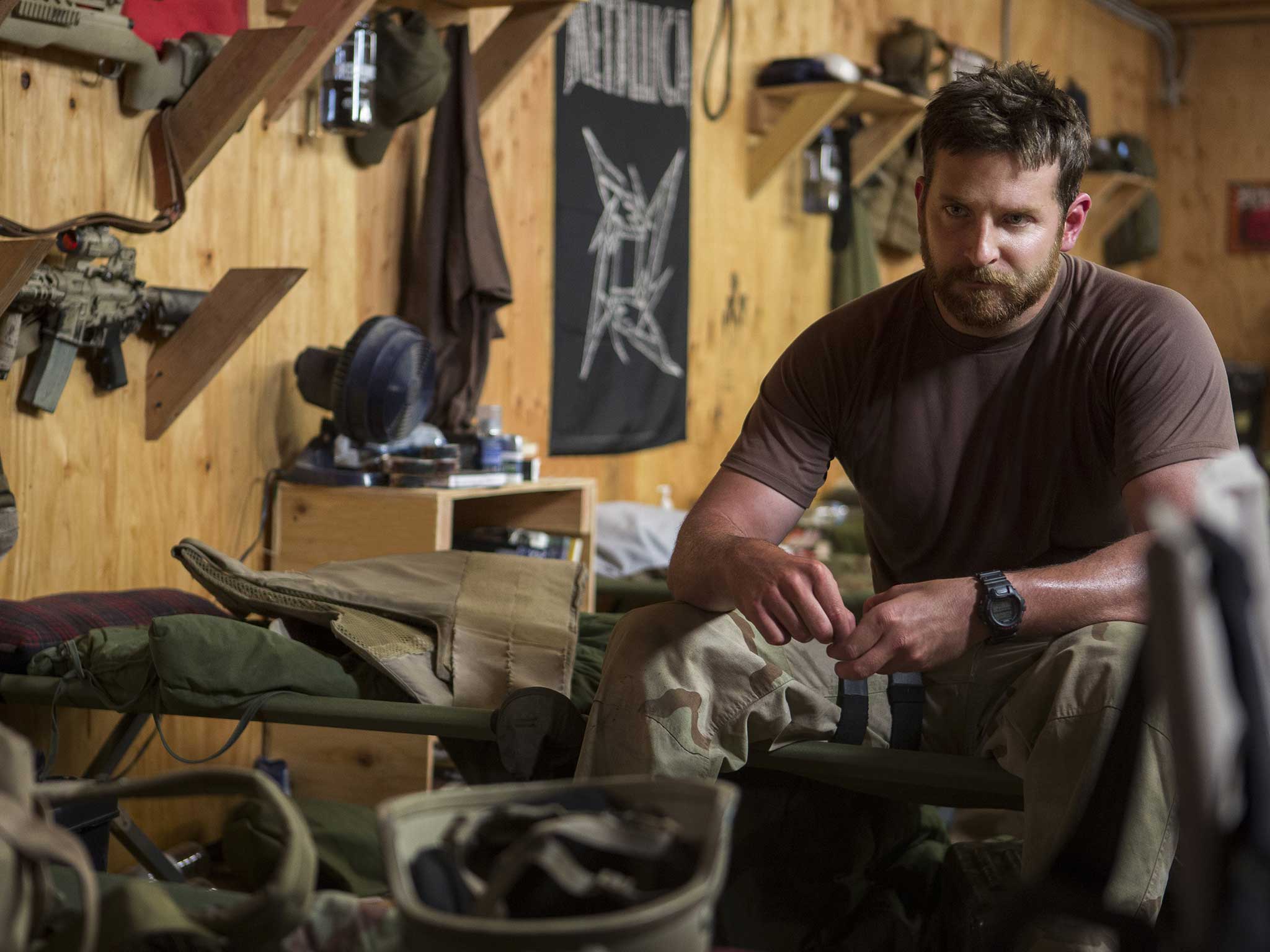American Sniper: Separating fact from fiction in Clint Eastwood's Oscar-nominated movie
Chris Kyle didn't kill Syrian sniper Mustafa in real life, and he didn't witness the death of fellow SEAL Ryan Job

Your support helps us to tell the story
From reproductive rights to climate change to Big Tech, The Independent is on the ground when the story is developing. Whether it's investigating the financials of Elon Musk's pro-Trump PAC or producing our latest documentary, 'The A Word', which shines a light on the American women fighting for reproductive rights, we know how important it is to parse out the facts from the messaging.
At such a critical moment in US history, we need reporters on the ground. Your donation allows us to keep sending journalists to speak to both sides of the story.
The Independent is trusted by Americans across the entire political spectrum. And unlike many other quality news outlets, we choose not to lock Americans out of our reporting and analysis with paywalls. We believe quality journalism should be available to everyone, paid for by those who can afford it.
Your support makes all the difference.The 87th Academy Awards are coming this weekend, and the military blockbuster American Sniper has been nominated for six Oscars, including Best Picture and Best Actor for Bradley Cooper’s role as Navy SEAL sharpshooter Chris Kyle.
Some veterans groups and Kyle’s family and friends have mostly praised the movie for its portrayal of urban combat in Iraq, Kyle himself, and veteran struggles with post-traumatic stress. However, the movie strays from the truth on some aspects of Kyle’s life and deployments.
We round-up the biggest factual inaccuracies with the film:
The emphasis on Syrian sniper Mustafa
The film depicts at great length the enemy sniper Mustafa, an apparent near-equal of Kyle’s who once competed in the Olympics as a marksman. However, as the Post’s World Views blog highlighted last month, it is unclear if that particular insurgent sniper ever existed. He is mentioned in just one paragraph in Kyle’s memoir, in which Kyle says he never saw Mustafa.
The movie, on the other hand, shows Mustafa stalking Kyle and his Navy SEAL colleagues through multiple cities and deployments in Iraq over several years. Kyle eventually kills him with a shot of more than 2,100 yards — a major moment in the film and purportedly the SEAL’s longest shot ever. He did take a shot that long, but it hit an insurgent with a rocket-propelled grenade launcher, according to his book.
In reality, it’s highly unlikely that one insurgent sniper would have appeared in that many different locations during the Iraq War. Jason Hall, the film’s screenwriter, told The Washington Post that including Mustafa in so much of the film acted as connective tissue and made Kyle’s four deployments less “episodic.” Kyle did not kill him.
Kyle’s prominent use of the satellite phone
The film shows Kyle repeatedly on the phone with his wife, Taya, while on missions “outside the wire.” Several times she listens to the sounds of combat from thousands of miles away, horrified.
In reality, Kyle wrote in his book that his wife experienced something like that just once. Hall, the screenwriter, said he expanded the use of the satellite phone in the movie so that viewers could see them communicate while he was deployed. The couple also used e-mail, but that is not shown in the movie.
The death of fellow SEAL Ryan Job
Kyle witnessed two of his SEAL teammates get seriously wounded in combat. One of them, Ryan Job, took a gunshot to the face in 2006, and died in 2009 while in surgery. His death occurred after he got married and had climbed Mount Rainier, according to his obituary.
However, the film shows Job dying earlier, while Kyle is in Iraq on his last deployment. The altered timeline provided motivation for Kyle to kill the Syrian sniper in the movie.
Kyle’s last day
In the film, Kyle is killed by an unnamed veteran who is struggling with mental issues. The man picks Kyle up at his house, and then the film moves to real footage of Kyle’s funeral at the Dallas Cowboys stadium, a memorial service that drew thousands of people.
In reality, Kyle picked up the veteran — Eddie Ray Routh — at Routh’s house. Routh shot and killed Kyle and his friend, Chad Littlefield, at a rifle range where the three men had gone to hang out.
Routh stole Kyle’s pickup truck and led police on a high-speed chase before he was captured. Routh’s murder trial is now underway. His lawyers, who do not dispute that Routh killed Kyle and Littlefield, are arguing for a verdict of not guilty by reason of insanity.
Copyright: Washington Post
Join our commenting forum
Join thought-provoking conversations, follow other Independent readers and see their replies
Comments